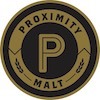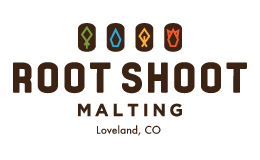Master Brewers Podcast
United We Brew™
About the show
Each week, thousands of brewers download The Master Brewers Podcast to hear interviews with the industry's best & brightest in brewing science, technology, and operations. The show is known for featuring technical deep dives, a bit of brewing history, cutting edge research, hard lessons learned, important industry contributors, and no fluff. If you make beer for a living, this show is for you.
Thank you, sponsors!
 |
 |
 |
 |
 |
 |
 |
 |
Master Brewers Podcast on social media
Episodes
-
Episode 325: Controlling t2N
January 13th, 2025 | 40 mins 41 secs
Practical strategies for controlling trans-2 nonenal in your brewery.
-
Episode 202: The Omission Story + New Gluten-Free/Reduced Regs
January 6th, 2025 | 48 mins 50 secs
The father of the gluten-removed beer category joins us to discuss recently updated federal regulations that may affect your gluten-free or gluten-reduced claims. That's the first part of today's show. After the break, stay tuned to hear the story of how the first commercial gluten-removed barley brew came to life.
-
Episode 324: Flavor Stability
December 30th, 2024 | 1 hr 54 secs
What New Glarus prioritizes to maximize flavor stability.
-
Episode 197: A History of Brewing Innovation
December 23rd, 2024 | 1 hr 9 mins
We look back at the last 70 years of innovations in brewing, we look forward to what the future holds, and we hear a pint full of great anecdotes from an author with whom we're all familiar.
-
Episode 323: Brewing Fittings
December 16th, 2024 | 45 mins 15 secs
Why Brewers Should Consider Alternatives to Tri-Clamp
-
Episode 145: Investigating the Factors Impacting Aroma, Flavor, and Stability in Dry-Hopped Beers
December 9th, 2024 | 46 mins 2 secs
We dig into a couple of peer-reviewed papers from the Master Brewers Technical Quarterly that help us navigate the complexities of hop aroma and make better beer.
-
Episode 322: Survival of Pathogens in Non-Alcoholic Beers
December 2nd, 2024 | 32 mins 36 secs
A study of 50 NA beers hunts for human pathogens.
-
Episode 196: Goose Island's Wild Yeast Chase
November 25th, 2024 | 30 mins 23 secs
In 2018 Goose Island was plagued with a wild yeast contamination identified in post centrifuged products. This is how we systematically sought root cause, and ultimately eradicated the contamination despite our previous process understandings.
-
Episode 321: Infusion Malts
November 18th, 2024 | 28 mins 28 secs
The creator of infusion malts joins us to explain what they are and why they're special.
-
Episode 190: Variation in Starch Structure
November 11th, 2024 | 37 mins 3 secs
Did you know that the gelatinization temperature of your malt could be as low as 136F or as high as 154F? Charlie Bamforth's successor joins us to talk about variations in starch structure and what that might mean for your mash.
-
Episode 320: Mixed Culture Fermentations
November 4th, 2024 | 49 mins
The John Rowley approach to sour & funk
-
Episode 194: Metallic Off-flavor in Kettle-Sours
October 28th, 2024 | 27 mins 10 secs
The story of how Creature Comforts Brewing tracked down and eliminated metallic off-flavor in kettle-sours.
-
Episode 319: Science Over Bias
October 21st, 2024 | 55 mins 42 secs
You've seen the headlines. Is the US government really about to change its recommendations for alcohol consumption?
-
Episode 188: Impossible Beer
October 14th, 2024 | 42 mins 22 secs
More engineered brewers yeast strains capable of "impossible" feats.
-
Episode 318: IoT Autoclave
October 7th, 2024 | 29 mins 34 secs
How affordable automation can free up resources and improve quality in breweries of any size.
-
Episode 102: Kveik
September 30th, 2024 | 35 mins 28 secs
Richard Preiss discusses his work with genetically unique yeast used to produce Norwegian farmhouse beers known as kveik.
